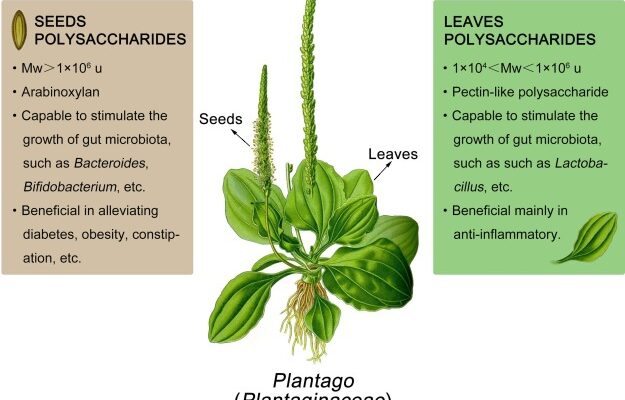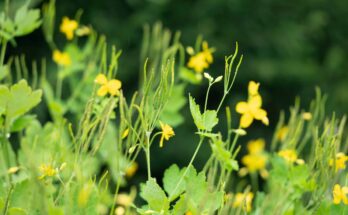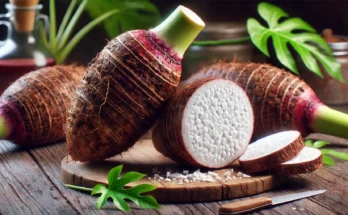Plantago lanceolata, commonly known as ribwort plantain or narrow-leaved plantain, is a remarkable herb that has been used for centuries in traditional medicine due to its wide-ranging therapeutic properties. With a history that spans across cultures and continents, this often-overlooked plant is packed with benefits that can support overall health and wellness. In this article, we’ll explore the many uses and advantages of Plantago lanceolata, from its medicinal properties to practical ways to incorporate it into your health routine.
What is Plantago lanceolata?
Plantago lanceolata is a perennial herb that belongs to the Plantaginaceae family. It is native to Europe and parts of Asia but has spread widely across the globe, thriving in grasslands, roadsides, and disturbed areas. This plant has narrow, lance-shaped leaves and tall, cylindrical flower spikes that appear in late spring or early summer. While its widespread distribution may make it appear like an ordinary weed, Plantago lanceolata is actually a powerhouse of nutrients and medicinal compounds.
Incredible Health Benefits of Plantago lanceolata
1. Respiratory Health
One of the most well-known uses of Plantago lanceolata is for respiratory ailments. The plant contains compounds such as iridoid glycosides, which have soothing effects on the respiratory system. It is particularly effective in treating conditions like coughs, bronchitis, asthma, and colds.
- Cough Suppressant: The mucilage content in the plant acts as a natural cough suppressant, helping to ease irritation in the throat and reduce coughing.
- Expectorant: Plantago lanceolata has mild expectorant properties, which means it can help to clear mucus from the airways, making it beneficial for those with congestion or phlegm buildup.
How to Use:
- Tea: Steep 1-2 teaspoons of dried Plantago lanceolata leaves in hot water for about 10-15 minutes. Drink this tea up to three times a day for relief from respiratory discomfort.
- Syrup: Plantago lanceolata can also be found in syrups designed to soothe the throat and reduce coughing.
2. Anti-inflammatory Properties
Inflammation is at the root of many health problems, from chronic pain to autoimmune diseases. The anti-inflammatory properties of Plantago lanceolata are attributed to its flavonoids, tannins, and other compounds that help reduce inflammation in the body.
This makes it particularly useful for conditions such as arthritis, joint pain, and inflammatory skin issues like eczema.
How to Use:
- Topical Application: Make a poultice by grinding fresh leaves of Plantago lanceolata and applying them directly to inflamed skin or joints. This can help soothe irritation and reduce swelling.
- Infused Oil: An infused oil made from Plantago lanceolata can be massaged into sore areas to relieve inflammation.
3. Digestive Health
Plantago lanceolata has traditionally been used to aid digestion and treat gastrointestinal issues such as indigestion, ulcers, and diarrhea. The plant’s mucilage helps coat and soothe the digestive tract, providing relief from irritation and promoting healing.
- Gut Soothing: The plant’s mucilaginous properties can also help to regulate bowel movements and calm the digestive system, making it useful for those with conditions like irritable bowel syndrome (IBS).
- Antimicrobial: Plantago lanceolata is believed to have antimicrobial properties, which can help maintain a healthy gut microbiome by preventing the growth of harmful bacteria.
How to Use:
- Herbal Infusion: A mild tea made from the leaves of Plantago lanceolata can be consumed after meals to promote digestion and alleviate discomfort.
- Tincture: Plantago lanceolata tinctures can be taken in small doses to help soothe digestive distress.
4. Wound Healing and Skin Care
The plant’s ability to speed up wound healing and treat skin ailments is well-documented in herbal medicine. Its antimicrobial, anti-inflammatory, and astringent properties make it an excellent remedy for cuts, bruises, burns, insect bites, and skin irritation.
- Wound Healing: Plantago lanceolata promotes the formation of new tissue, accelerates healing, and reduces the risk of infection.
- Skin Soothing: The astringent properties of the plant help tighten the skin and reduce swelling around wounds or bug bites.
How to Use:
- Poultice: Crush fresh leaves and apply directly to cuts or wounds. This can help speed healing and prevent infection.
- Salve or Cream: Use a salve made with Plantago lanceolata to treat skin conditions like eczema or psoriasis.
5. Anti-Allergic Action
Plantago lanceolata has natural antihistamine properties, making it a useful herb for people who suffer from seasonal allergies or hay fever. The plant helps reduce symptoms such as sneezing, itchy eyes, and runny nose by inhibiting the release of histamine in the body.
How to Use:
- Tea: Drinking tea made from Plantago lanceolata leaves can help alleviate allergic symptoms when taken regularly during allergy season.
- Tincture: A tincture of Plantago lanceolata can also be taken for more concentrated relief from allergy symptoms.
6. Boosts Immune Function
With its rich content of vitamins, minerals, and antioxidants, Plantago lanceolata helps to strengthen the immune system. It can be used to fight off common infections, including colds and flu, and to provide general immune system support.
How to Use:
- Infused Tea: Drinking a daily cup of Plantago lanceolata tea can help support your immune system, especially during flu season.
- Powder: Plantago lanceolata powder can be sprinkled into smoothies or capsules to provide additional immune-boosting benefits.
How to Use Plantago lanceolata in Everyday Life
Whether you prefer to use Plantago lanceolata in its raw form, as an herbal supplement, or as a component in skincare products, there are many practical ways to incorporate this versatile plant into your daily routine.
1. As a Tea
Making tea from Plantago lanceolata leaves is one of the simplest ways to experience its benefits. The tea has a mild, slightly earthy taste and can be consumed several times a day. To make the tea:
- Steep 1-2 teaspoons of dried Plantago lanceolata leaves in a cup of hot water for 10-15 minutes.
- Strain and enjoy hot or cold.
2. As a Tincture
Plantago lanceolata tinctures are widely available in health food stores. These concentrated extracts allow for easy dosing and can be added to water or juice. Follow the recommended dosage on the bottle.
3. In Salves and Creams
Herbal salves containing Plantago lanceolata are excellent for topical application. You can use them on cuts, bruises, insect bites, or even to soothe sunburned skin.
4. In Capsules or Tablets
For those who prefer a more convenient form of supplementation, Plantago lanceolata is available in capsule or tablet form. This is an easy way to get the plant’s medicinal benefits without the need to brew teas or make tinctures.
Plantago lanceolata is more than just a common roadside plant—it is an incredibly potent herb with a wide variety of health benefits. From supporting respiratory health to promoting wound healing, this herb has been a valuable part of traditional medicine for centuries. By incorporating it into your wellness routine, you can harness its many healing properties and improve your overall health. Whether you choose to use it in tea, tincture, or topical applications, Plantago lanceolata offers a natural, effective way to support your health and well-being.



